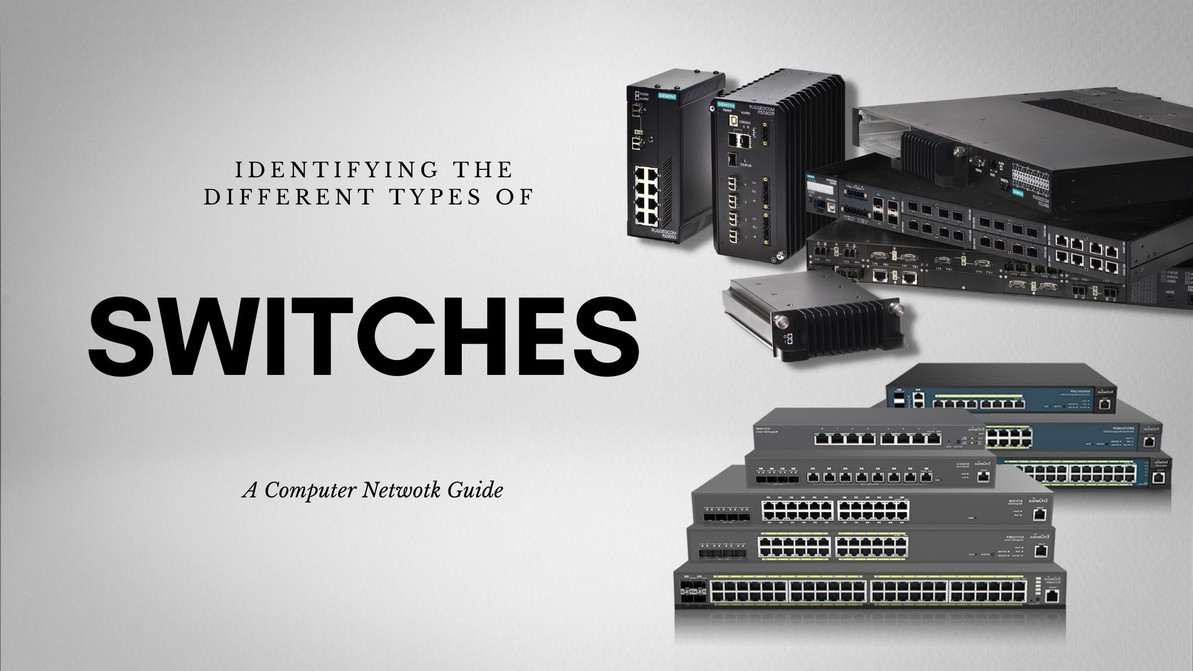Identifying The Different Types of Switches: A Computer Network Guide
Ethernets are gaining popularity in industrial computer-controlled systems, because they allow for a single network protocol at both the higher and lower levels of an industrial communication infrastructure. It is a traditional technology for connecting devices within a wired local area network (LAN) or wide area network (WAN). Devices may communicate with each other utilizing a protocol, which is a set of regulations or agreed language used by all nodes on the network.
Switches are the network's connection points. These tiny gadgets can receive data from numerous input ports and send it to the right output port, which sends data to a destination in the network. In a network, there are several types of switches. The following are some of them:
Unmanaged Switches
These are the most popular switches for small businesses and home networks because they simply plug in and start functioning, and they do not need to be watched or configured. These may be connected using only little cable connections. It allows devices on a network to communicate with each other, such as a computer communicating with a computer or a computer communicating with a printer over a distance. They are the cheapest of all switches in terms of cost.
Managed Switches
A master/slave network operation is achieved by utilizing these sorts of switches, which have a number of characteristics, such as the highest levels of security, precision control, and whole network management. These are utilized in businesses with a large network that may be customized to improve the functionality of specific networks. They're the most expensive option around, but because of their scalability, they're an excellent choice for a growing network. They are made possible using a basic networking management method (SNMP).
They are of two types of managed switches:
Smart switches - In comparison to the other managed switches, these ones have fewer management capabilities, but they do include some security settings. They have a simpler management interface than the other managed switches because of this. As a result, they are commonly known as half-managed switches. These are mostly used in gigabit and continuous LANs that allow for data transfer at speeds of 10 Gb/s or greater. It's possible to configure VLANs on it (Virtual LAN).
Enterprise managed switches - The ability to repair, duplicate, transform, and display a number of network configurations is just one example. A web-based SNMP agent and command line interface are also included. These are also known as fully managed switches because they offer additional features that may be enhanced. These are used by businesses with a large number of ports, switches, and nodes.
LAN switches
These are also known as Ethernet switches or data switches and are used to separate a bundle of information into several parts. These are utilized to connect points on a LAN network.
PoE switches
In a bid to make the job easier, Power over Ethernet switches are used in PoE. This technology combines data and power on the same cable, allowing power devices to receive data in parallel to electricity. As a result of this, these switches provide greater freedom by reducing the amount of time spent on cabling.
Recent Posts
-
Where Legacy Bays Meet Lightning Speed: The HPE 960GB LFF SATA Mixed Use SSD Built for ProLiant Gen9 and Gen10 Servers
Power and Reliability in Enterprise Storage: HPE 960GB LFF SATA Mixed Use SSD for ProLiant Gen9 and …Dec 14th 2025 -
Solid Confidence in Every Byte: Powering ProLiant Gen10 and Gen10 Plus Servers with the HPE 960GB LFF Value SAS SSD
HPE 960GB 3.5-inch LFF Digitally Signed Firmware SAS-12Gbps Mixed Use Value SAS Multi Vendor SSD for …Dec 13th 2025 -
Where Reliability Meets Everyday Speed: Empowering ProLiant Gen9 and Gen10 Servers with the HPE 960GB LFF SATA Mixed Use SSD
HPE 960GB 3.5-inch LFF Digitally Signed Firmware SATA-6Gbps Mixed Use SSD for ProLiant Gen9 and Gen1 …Dec 12th 2025




